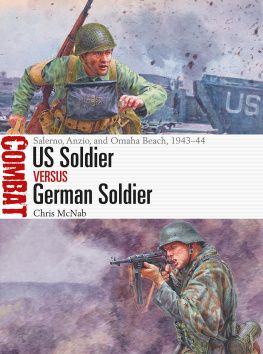FROM
Omaha Beach
TO
Dawsons Ridge

An Association of the U.S. Army Book
FROM
Omaha Beach
TO
Dawsons Ridge
The Combat Journal of
Captain Joe Dawson
EDITED BY
COLE C. KINGSEED
Naval Institute Press
Annapolis, Maryland
The latest edition of this work has been brought to publication with the generous assistance of Marguerite and Gerry Lenfest.
Naval Institute Press
291 Wood Road
Annapolis, MD 21402
2005 by Cole C. Kingseed
All rights reserved. No part of this book may be reproduced or utilized in any form or by any means, electronic or mechanical, including photocopying and recording, or by any information storage and retrieval system, without permission in writing from the publisher.
ISBN: 978-1-61251-523-6 (eBook)
The Library of Congress has cataloged the hardcover edition as follows:
Dawson, Joe, 19141998.
From Omaha Beach to Dawsons Ridge : the combat journal of Captain Joe Dawson / edited by Cole C. Kingseed.
p. cm.
Includes bibliographical references and index.
1. Dawson, Joe, 19141998Correspondence. 2. United States. Army. Infantry Regiment, 16th. 3. World War, 19391945CampaignsWestern Front. 4. World War, 19391945CampaignsAfrica, North. 5. World War, 19391945Personal narratives, American. 6. United States. ArmyOfficersCorrespondence. I. Kingseed, Cole C. (Cole Christian), date. II. Title.
D769.3116th .D39 2005
940.541273092dc22
2005013475

 Print editions meet the requirements of ANSI/NISO z39.48-1992 (Permanence of Paper).
Print editions meet the requirements of ANSI/NISO z39.48-1992 (Permanence of Paper).
13 12 11 10 9 8 7 6 5 9 8 7 6 5 4 3 2 1
First printing
To Those Who Served
Contents
O n the fiftieth anniversary of D-Day, journalist Tom Brokaw described those who fought in World War II as the greatest generation any society has ever produced. Historian Stephen E. Ambrose, whose books D-Day: The Climactic Battle and Citizen Soldiers have inspired the current generation to reflect on the achievements of their parents and grandparents, concurs.
In describing Americas sons and daughters of the 1940s, Ambrose notes they were mostly high school and college students when the United States entered the war. Most didnt want to fight but did so because there was a job to be done and simply no one else to do it. They were drafted or enlisted voluntarily between 1941 and 1945. Beginning June 6, 1944, they entered France as liberators, not conquerors. From June 7 to V-E Day, they remained in constant combat against the German Wehrmacht. When the war ended in May 1945, they gladly exchanged their uniforms for civilian attire and returned home to rebuild their lives and world.
Essential to the Allied victory in Europe were Americas citizen soldiers who comprised the combat divisions that fought on the front lines against the German war machine. By early 1944, the U.S. Army plan called for ninety combat divisionssixty-seven infantry, two cavalry, sixteen armored, and five airborne. All engaged in combat in World War II, some longer than others. Of the infantry divisions, none had a more storied heritage than the 1st Infantry Division, the Big Red One. (Throughout this book, the 1st Infantry Division is variously referred to as the Big Red One, the Fighting First, and the First Division.)
First to fight in World War I, it was one of the first divisions to deploy to England in World War II and the first division to land in North Africa. Its regiments waded ashore in Sicily in 1943, and in June 1944, it cracked the Atlantic Wall on D-Day. The Fighting First left the flower of its youth on the rising tide of Omaha Beach, in the village of Colleville beyond the Omaha escarpment, and in the hedgerows of Normandy.
Always in the forefront of the First U. S. Army, the Big Red One ruthlessly pursued the Wehrmacht across the Seine, into Belgium and Germany. At Aachen, two of its companies repelled vigorous enemy counterattacks for thirty-nine days on a hilltop now known as Dawsons Ridge, named after one of the company commanders who refused to withdraw in the face of overwhelming pressure. The end of the war found the First Division in the heartland of Germany along the Elbe. The price in casualties had been high: 4,325 of the approximately 50,000 men who served in its ranks during World War II died.
Commanding one of the companies in the forefront of the Big Red Ones advance was a thirty-year-old captain from Waco, Texas, by the name of Joe Dawson. Few outside the First Division will recognize his name, but he was representative of the generation that fought World War II. Born immediately before the United States entered World War I, he completed high school and enrolled in Baylor University, graduating at the height of the Great Depression. He entered the army in March 1941 and soon found himself at Officer Candidate School at Fort Benning, Georgia, the Home of the Infantry.
Assigned to the Fighting First upon commissioning, Dawson served on the regimental staff when the troops deployed to England in August 1942. Within one hundred days, he was in North Africa as part of Operation TORCH. When that campaign ended the subsequent May, he repeatedly requested command of an infantry company for the upcoming invasion of Sicily. Though he fought with the Big Red One throughout the Sicilian campaign, Dawson did not receive troop command until August, when he assumed command of G Company, 2nd Battalion, 16th Infantry Regiment. Except for a brief respite when he was wounded in action, he retained command until he was evacuated for wounds received outside Aachen in October 1944.
As a prelude to Operation OVERLORD, the invasion of Western Europe, the First Division deployed to England and prepared to lead the invasion of France. As it was the most tested combat division in the European Theater, Lieutenant General Omar Bradley selected it for the most difficult task, an amphibious assault along a four-mile stretch of sand called Omaha Beach. Above the shore was an escarpment rising nearly two hundred feet before it leveled off to a fertile plain, repeatedly cut by the Norman bocage. Dawsons company hit the beach at approximately 0700 hours on D-Day. In his own words, Utter chaos reigned, but he quickly organized his troops and led the assault on the heights above the beach.
According to historian Ambrose, Dawsons G Company was one of the first, if not
Next page







